Nondo graduated from Chiba University with a master’s degree in engineering under the MEXT Scholarship program. Currently, he is working at design consultancy A.C.O. Inc., where, as a user experience designer, he seeks to combine his interests in digital services and architecture to help design smart cities powered by artificial intelligence and I.o.T. . Outside work, he is working together with friends to run a mentorship program and podcasts that seek to help more to study in Japan.
*This article has been edited from the original interview for brevity and clarity.
Please tell us about yourself. What did you do before coming to Japan?
I started my career in urban design. After receiving a master’s degree in architecture from the University of the Witwatersrand in South Africa, I worked for a few years in an urban design firm that undertakes large, city-scale projects.
Why did you decide to go back to school?
During that time, we worked closely with the government, but I realized many people we were supposed to help in the government projects are, for all intent and purposes, invisible. The government was unable to track them because they had no IDs, passports, or any other forms of registration.
However, these same people had smartphones, even the latest Samsung models, and they were making this technological leap, leapfrogging into the digital era without ever experiencing landlines or fax machines. So, I wondered, how come Facebook and Google would know about these people through their mobile devices, but our local government, who is supposed to provide essential services, doesn’t even know their names?
Because of this question, I applied to a master’s program in engineering, so that I can research to see how you can take digital services and adapt them so that people at this stage, including the urban poor and in developing countries, can get access to infrastructural services.
Why did you decide to come to Japan for your studies?
It’s actually my second time in Japan. In 2014, I came to Japan for an internship at the Kengo Kuma architecture office and also studied at Soka University. I realized that these guys are doing very interesting things and wanted to come back to understand more about the technology.
And the other reason for me to come back is that I felt that I can add value to Japanese society. During the MEXT Scholarship interview, I was asked what I can learn from Japan, but I said, “oh no, this is what I am going to teach Japan.” The potential value we can add to Japanese society, to help Japan as a society, as MEXT Scholars, is really important.
So, how did you find the MEXT Scholarship?
I was looking for many different scholarships and did not specifically start with the MEXT Scholarship. I found the MEXT Scholarship through online forums where people who apply for scholarships give each other advice.
I was particular about applying to MEXT Scholarship. The other scholarship that was available to me was from JICA. I might have come to Japan on the JICA one as well, but why I picked the MEXT one because, under it, I will be allowed to pick my own career path after I complete my studies. The MEXT Scholarship also supports everything financially, including living and other expenses.
The MEXT Scholarship was also more open in terms of the academic path I can take. JICA wanted me to pursue a Ph.D. in architecture. With MEXT, I was able to explain to the scholarship committee the value of understanding digital services in architecture.
How did you find your student life in Japan? What are some of the positive and negative aspects of being a student here?
Let me start with the negatives. When I first got here, I thought the language nuances were really difficult to understand. For example, sometimes I would ask a professor about what he thinks and he will say bimyo. I thought I was doing great but actually, the professor wanted me to change what I was doing. The issue of understanding is not so much the language, but the expression and context are not something that is taught in school.
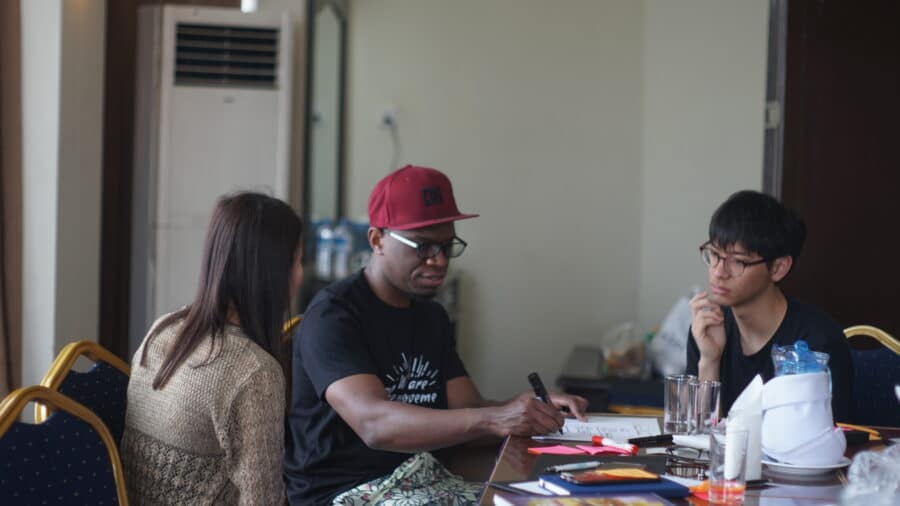
The other negative issue was that compared to other universities, many foreign students came to Chiba University, especially in the design and engineering departments, so it was easy to get stuck with only international friends. For instance, there was a large Korean population, a big Chinese population, and people would just stay in their own ethnic groups and not mingle as much.
The good thing about Japan is the people They are amazing and really curious. They have the time to listen and they don’t mind jumping between Japanese and English. In particular, older people are the best. For example, I met an 80-year-old architect as a 20-year-old African, and we would just hang out in his office and talk about architectural design. There is also another professor who would invite me to hang out in 100-year buildings in Southern Chiba. We would hang out with her friends and talk about architecture, it was extremely fun. These moments were unexpected but the most memorable moments in my short time in Japan.
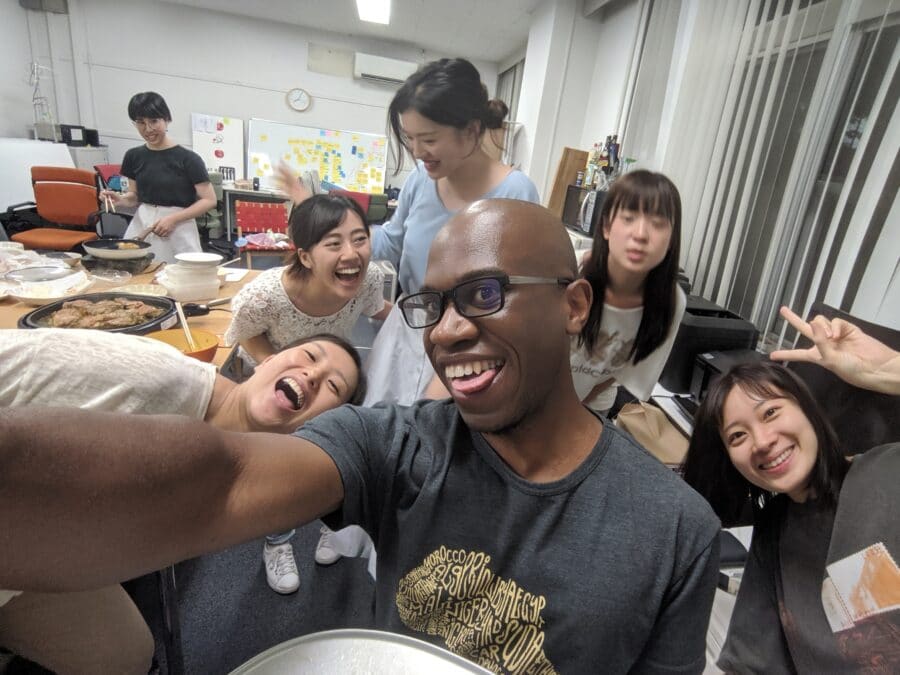
So after you graduated from Chiba University, why did you decide to stay in Japan for work?
First, I think Tokyo offers a great international platform. There is a diverse set of people you can meet here, such as among the MEXT Scholars.
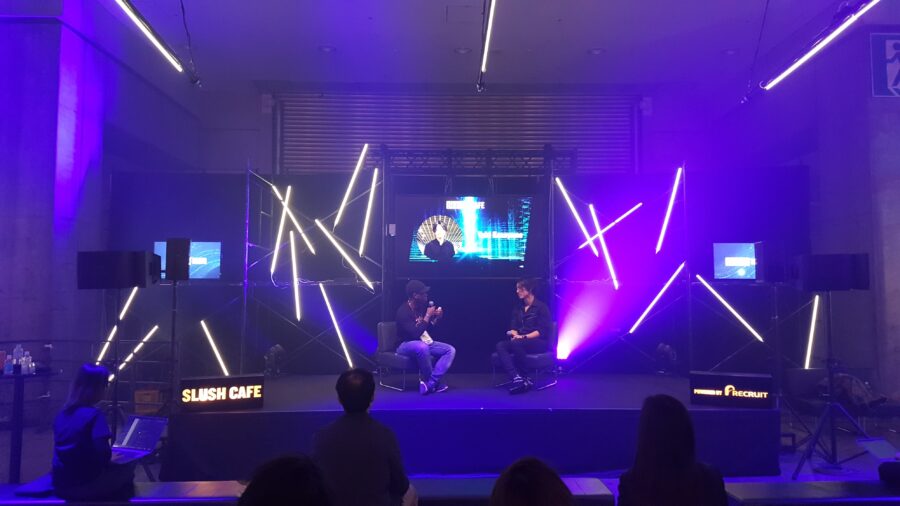
Second, I think Japanese people, once you get to know them really well, are very dynamic, at least in the creative spaces. They are very willing to push new ideas forward. Creatively, there are many interesting people here.
Last, I think I can still add much value to Japan. Japan needs to see people who come from developing countries as assets rather than just as people that they need to help out. So I need to stay here to prove that I have this value and can make a good impact on local society.
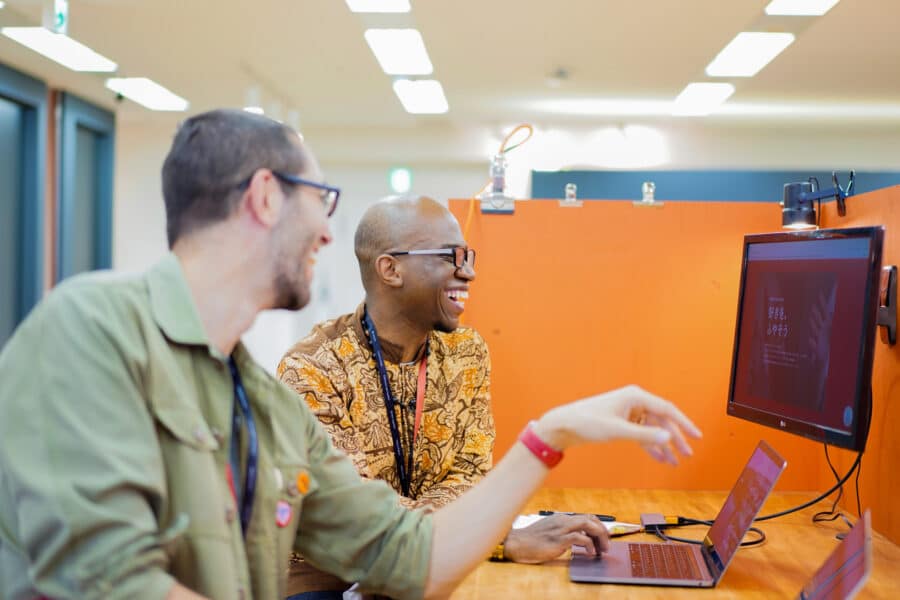
How is your working life? Are there any notable positives and negatives?
I will start with the negatives again. In the digital space, the Japanese language used in the industry is very different from the Japanese you learn in school classes. For example, the use of English terms like HP (homepage), SP (smartphone), and MTG (meeting) in a Japanese design office are completely different from what you learn normally. It’s a challenge that I am still having now, but I am happy that there is a leadership at A.C.O. that has given me the space to learn.
The same applies to reading the atmosphere. This has also been difficult at university, personal life and work, but fortunately, thanks to having good Japanese friends and interesting learning experiences, things became much easier.
The good thing about my work is having the option to work with international and Japanese projects. In particular, I like that I can use my niche of connecting architecture to digital services. When I first came to Japan, no one believed me and my professors asked me why I don’t just do my Ph.D. in architecture. But after I went to Stanford University for my thesis research, I met people there who are looking at mixing academic disciplines to drive innovations or create startups, and after listening to my niche, they told me to go do it. That experience helped me change my thesis and led me to this current role, where I combine urban planning and digital services.
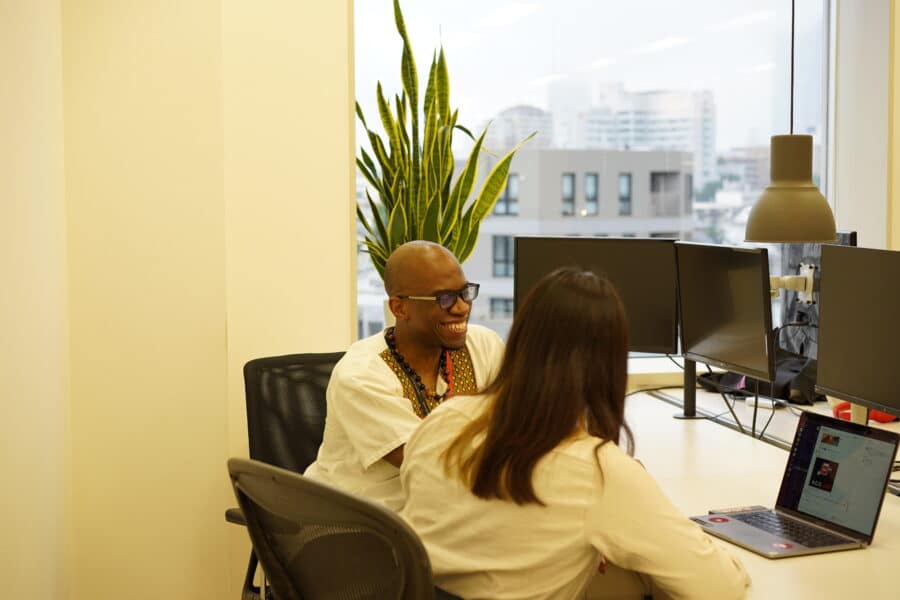
What is your advice for students looking to apply to the MEXT Scholars?
For MEXT applicants, the first thing is to do your research about Japan. When you research, avoid pop culture. I recommend In Praise of Shadows, which provides an in-depth understanding of Japanese society from a Japanese person’s perspective and sharing this knowledge with the world. Research Japan and be curious about it. It doesn’t have to be super in-depth, but avoid anime, pop culture, and fashion.
The more important thing is to be confident in what you want to do. The beauty of the MEXT Scholarship is that there will be opportunities to change and edit your research. But it would be best to know what you want to do for the next five years. So go orient yourself for at least the next five years and know what you will do after you finish the MEXT Scholarship.
The next useful thing to do is to reach out online. There are so many forums where you can interact with other people applying to the MEXT Scholarship. Tell everyone that you are coming to Japan and don’t keep it to yourself. I had no idea how to get to Japan in the beginning. Then this lady from America told me about the opportunity to come to Japan for the first time. So tell everyone you are applying and you will find people who support you on your dream along the way. You never know who might have been a MEXT Scholar before.
And if you don’t get in the first time you apply, apply again. It is important to think about when you come to Japan, how the scholarship will support you beyond you as an individual, such as a goal related to your country or helping to improve relationships among people. When people write their proposals, they will start with “me,” but to be blunt, sometimes people on the MEXT panel do not care just about you. They are investing instead in your ripple effects, how, if they fund 50 students, what kind of community they will create.
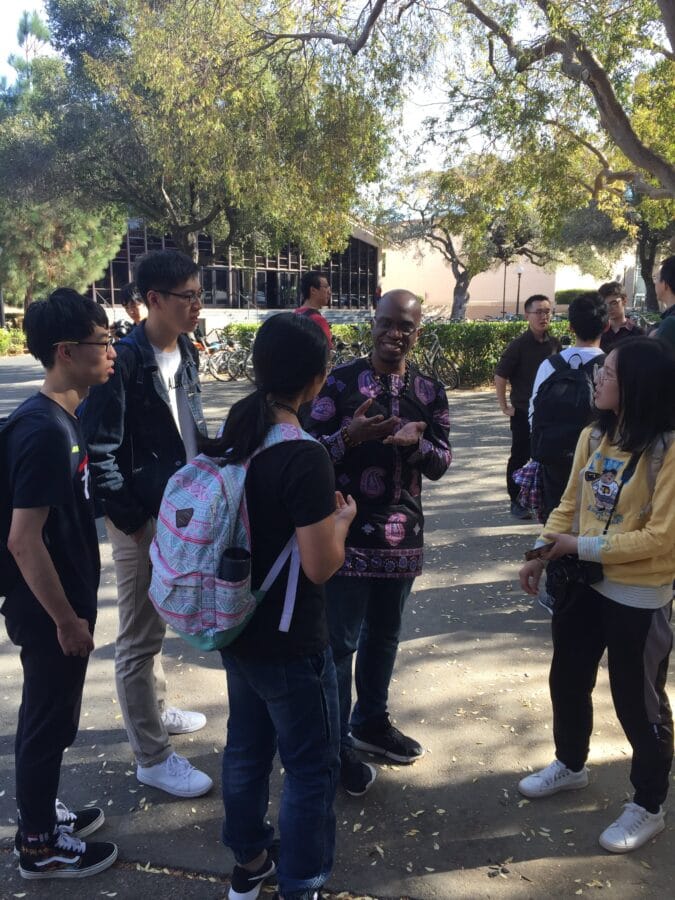
Also, value the importance of your own culture. Where you come from, take it as a strength and see how that can work with Japan. Never say Japanese culture is 100% superior to yours and have pride in where you come from. I think this is appealing to MEXT as it is trying to create a ripple effect. MEXT doesn’t want to just teach people Japanese and they go home. It wants you to come here and teach people here about your home culture and show them something from your home country that Japanese people never considered in the process of their thinking.
What about new MEXT Scholars who just started their studies?
The university will not give you the opportunity to let you do everything you want to do in Japan. I recommend that you take the chance and get involved in your local community. Even if you start small, these interactions usually lead to great opportunities and many chances to make good friends.
For me, I sent emails and visited offices just to say “hi” whenever I found something interesting. I still do that now. For example, I worked with an NGO called Safecast that helps to detect nuclear radiation after the Fukushima nuclear disaster. It was nice that I found it outside my university.
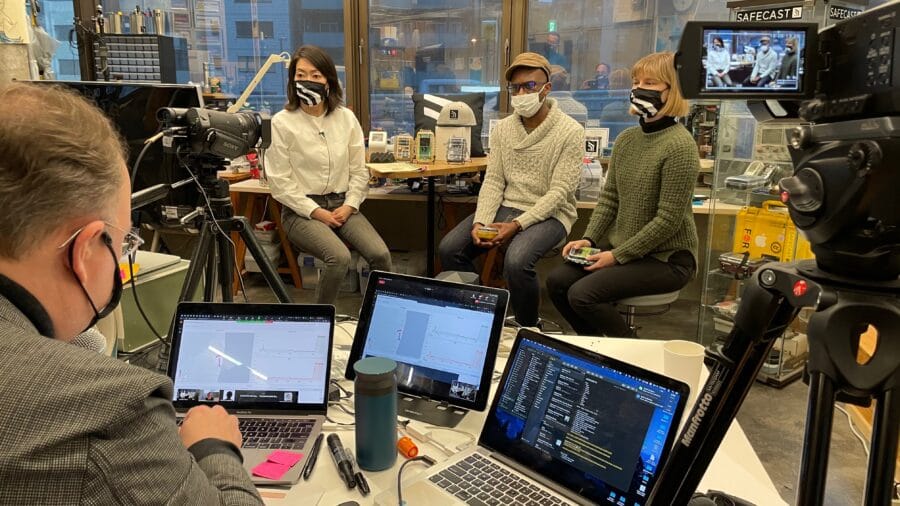
It is through joining these organizations outside of university that I found many mentors and use my skills. In the Fukushima case, we were helping Japanese people and we are actually developing very interesting technologies. I was very interested in tech and IT. So, rather than just joining a general volunteering activity, try to focus on it. There are many places you can find to change Japan but try to focus on where you can find the right people to inspire you. Then you can get involved in the community and have fun.
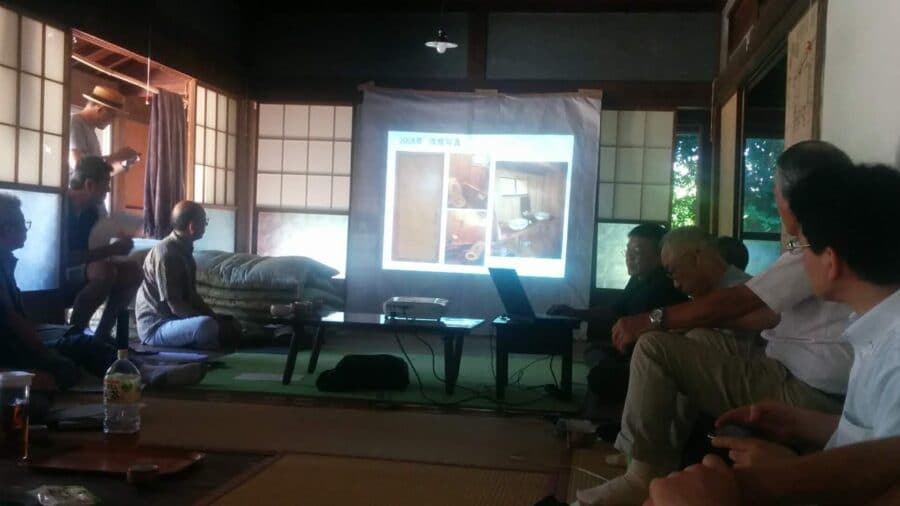
If you would like to get in touch with Nondo about his MEXT experience, please contact him here. Or tune into the dokodemo design podcasts, in which he interviews creators and designers in the tech industry (here and here).
Interviewer: Xiaochen Su, a Ph.D. candidate at the University of Tokyo and the Managing Director of the Study Abroad Research Institute, a non-profit organization seeking to promote study abroad in Japan.

